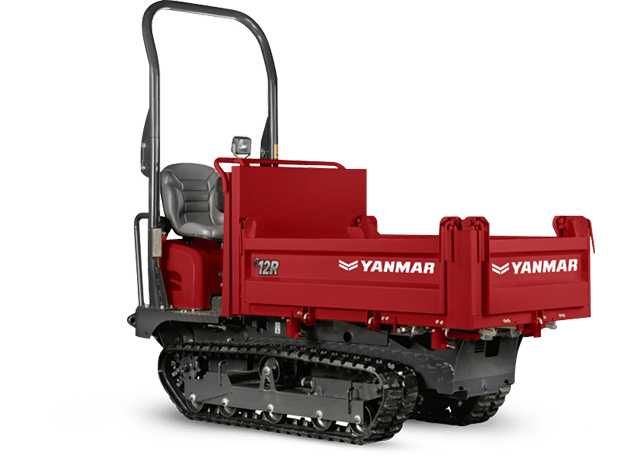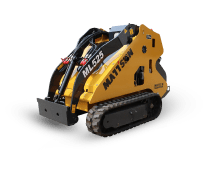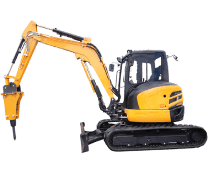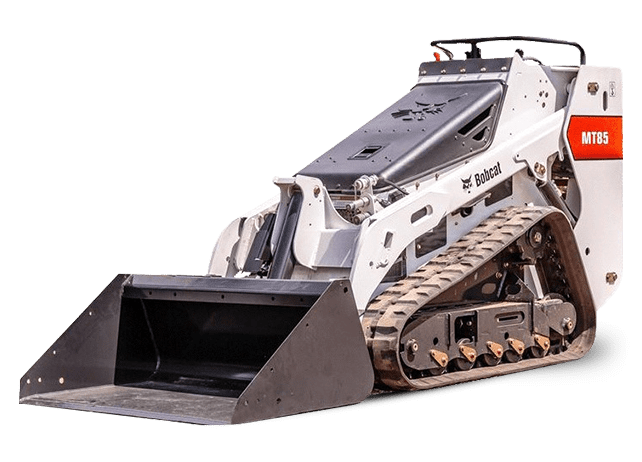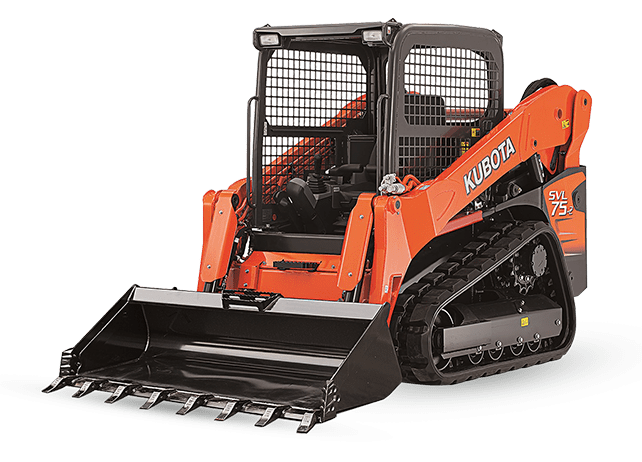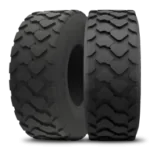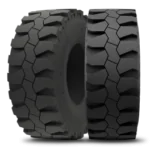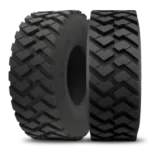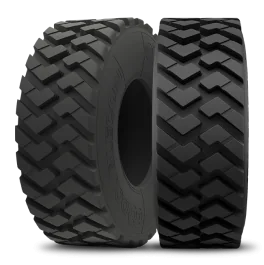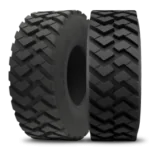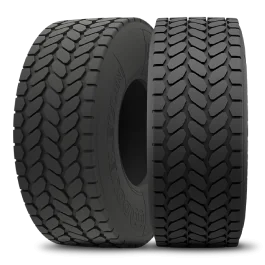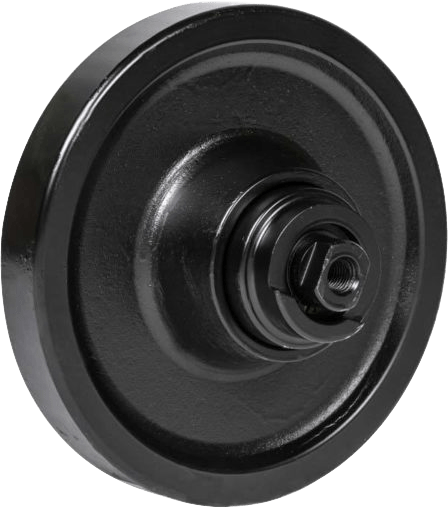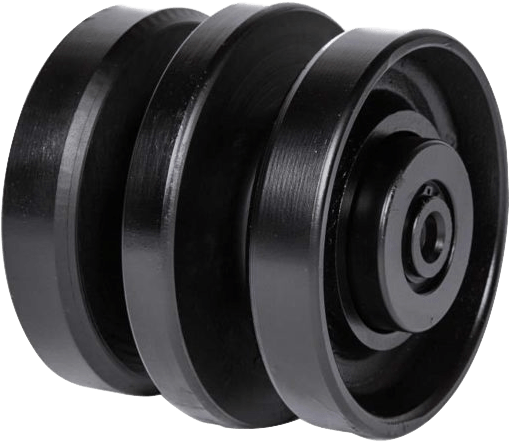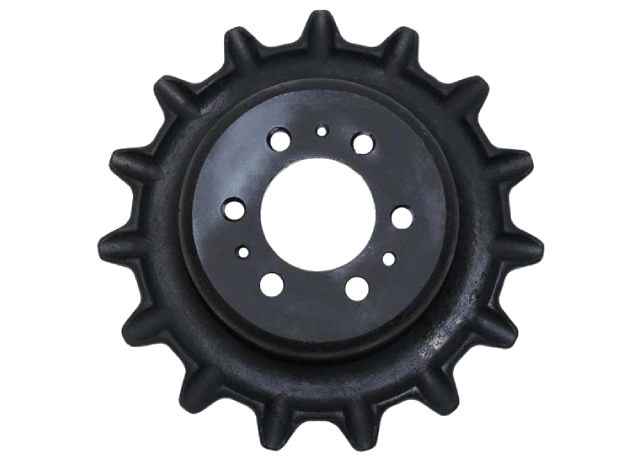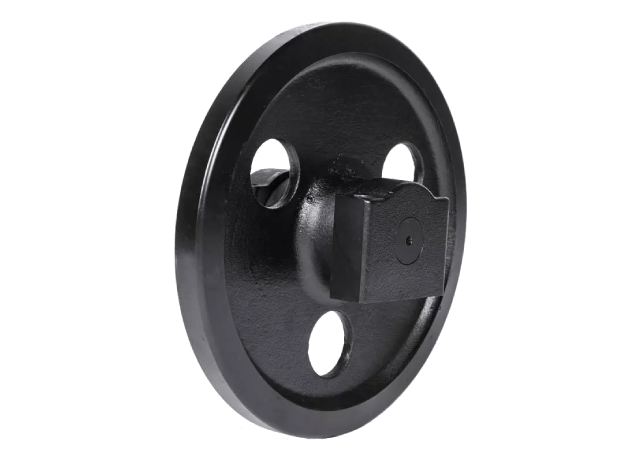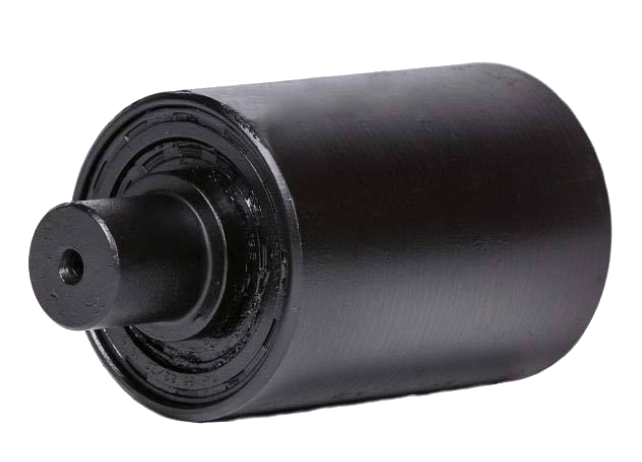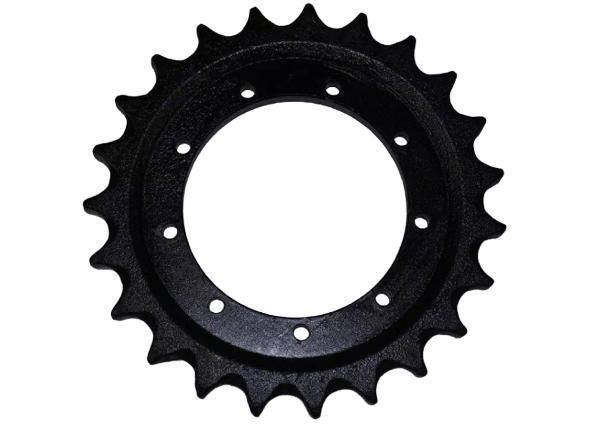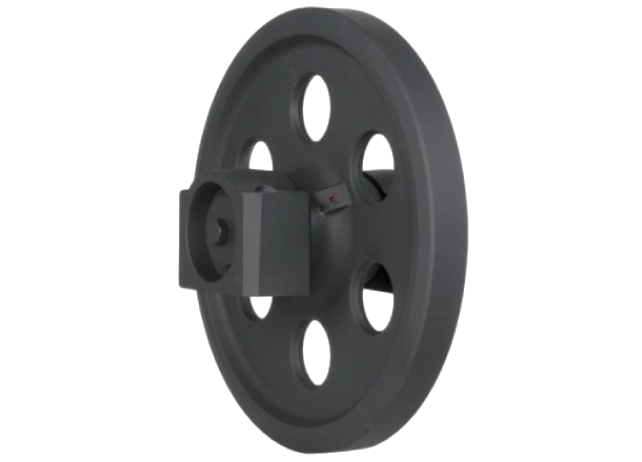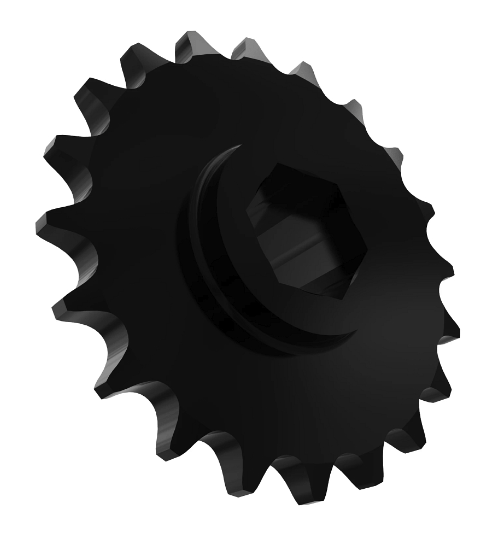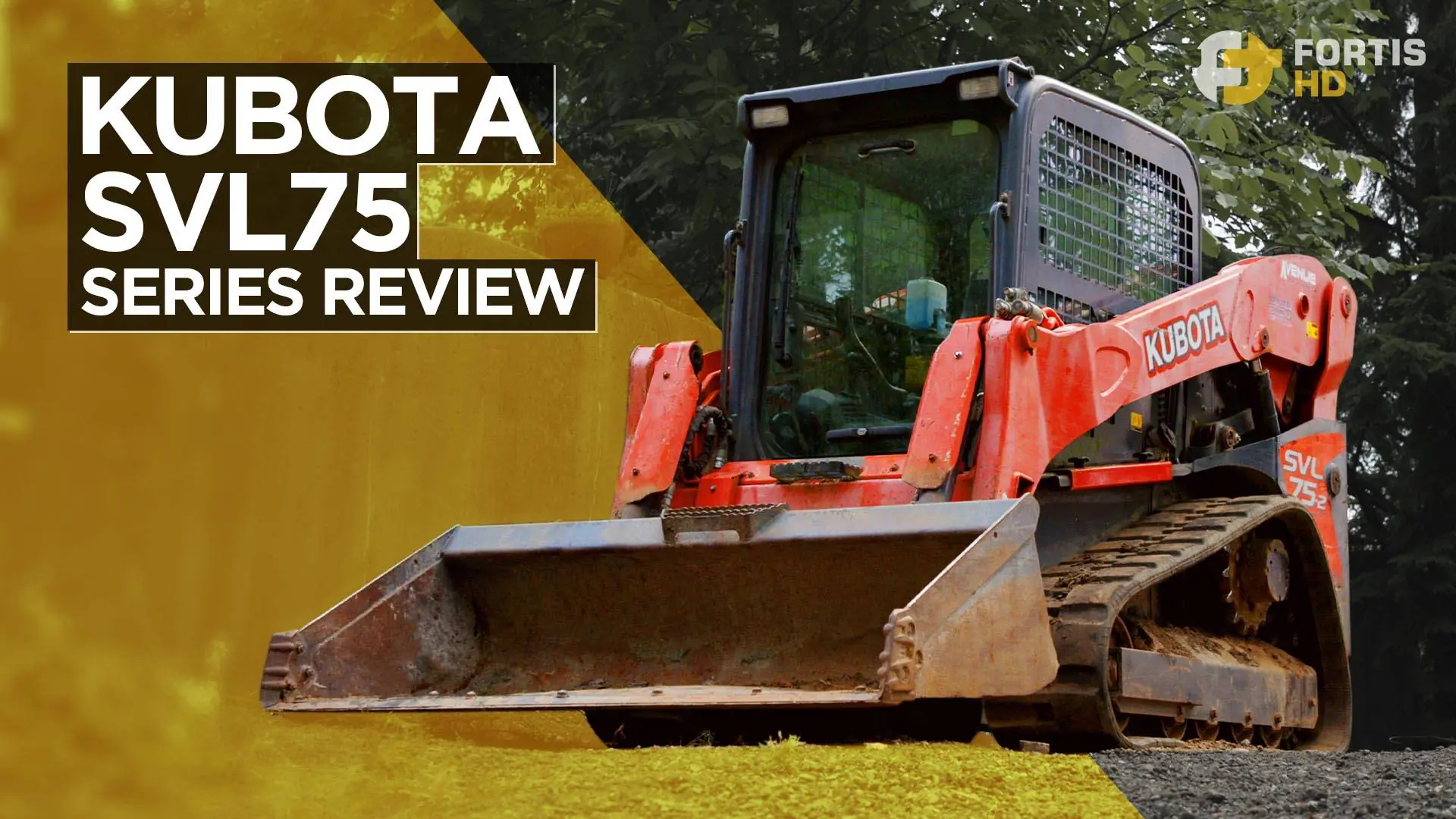After hundreds of hours of operation with the Kubota SVL75-2, three things come to mind: comfort, reliability, and durability. It’s no wonder the SVL75-2 has been one of the best sellers on the market.
According to EDA (Equipment Data Associates), a data and analytics platform providing information and insights related to the construction equipment and heavy machinery industry, in terms of unit sales (new and used), the Kubota SVL75-2 was #1 in several US states in 2022 and continued to be one of the top-selling compact track loaders in 2023.
We’ll objectively share our thoughts on this piece of equipment, present its specs, briefly explain some of them, and compare the SVL75-2 with its new and improved version: the SVL-3.
Table of Content
The Pros and Cons of the Kubota SVL75-2
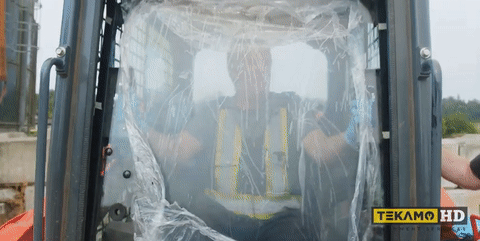
Let’s start with what makes the SVL-75 stand out from the competition and then mention things we at Fortis and most users find awkward but, fortunately, don’t hurt the experience much.
What’s Best on the Kubota SVL75-2
Probably the most characteristic feature is the roomy cab—more than other CTLs—with a roll-up door. The door design makes it easier to get in and out of the cabin even with the bucket up, something you can’t do in other compact track loaders with front doors swinging out.
You can operate the machine with the door open, which improves the comfort of your cab in the right season and weather and lets you communicate with coworkers without stepping out of the vehicle.
The cabin also has a standard full-back and head-rest suspension seat, radio, Bluetooth, sliding windows, and HVAC. It allows you to work 8-10 hours without much fatigue and, if you dare, nonstop action thanks to an almost 25-gallon fuel tank, which gives you enough time to run all day without refueling.
Also, the cab’s simple and intuitive design lets someone who’s never been in a CTL hop in and get to work with a brief tutorial.
The cabin is a two-piece sealed unit that fairly keeps dust, flying debris, and insects away. It has 360 degrees of visibility and hydraulic over hydraulic pilot controls for a responsive and predictable operation.
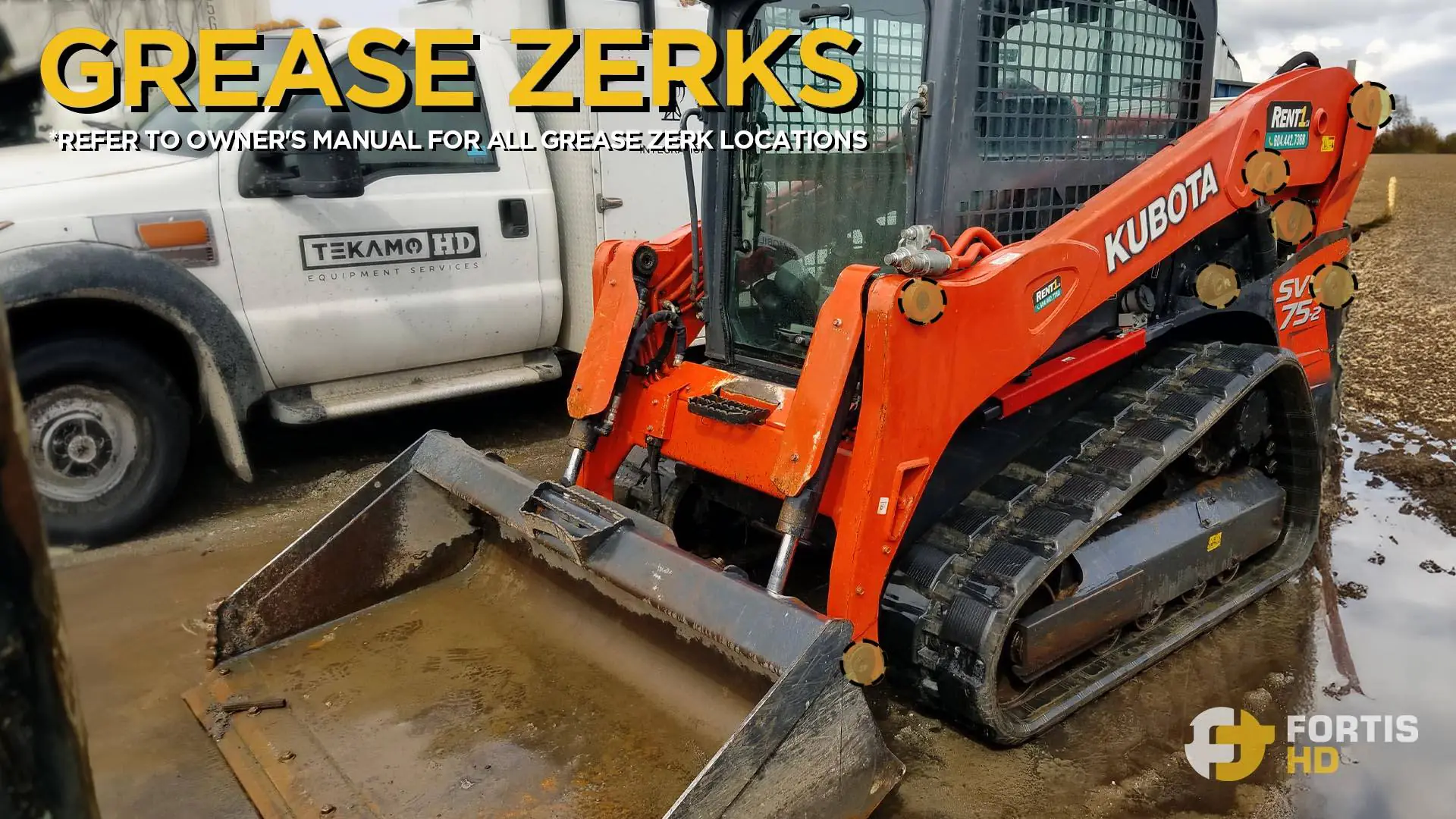
Another aspect characterizing the SVL75-2 is accessibility. It has easy access to the grease points, the hydraulic fluid and fuel ports, and the hydraulic level sight glass (which is inside the cab).
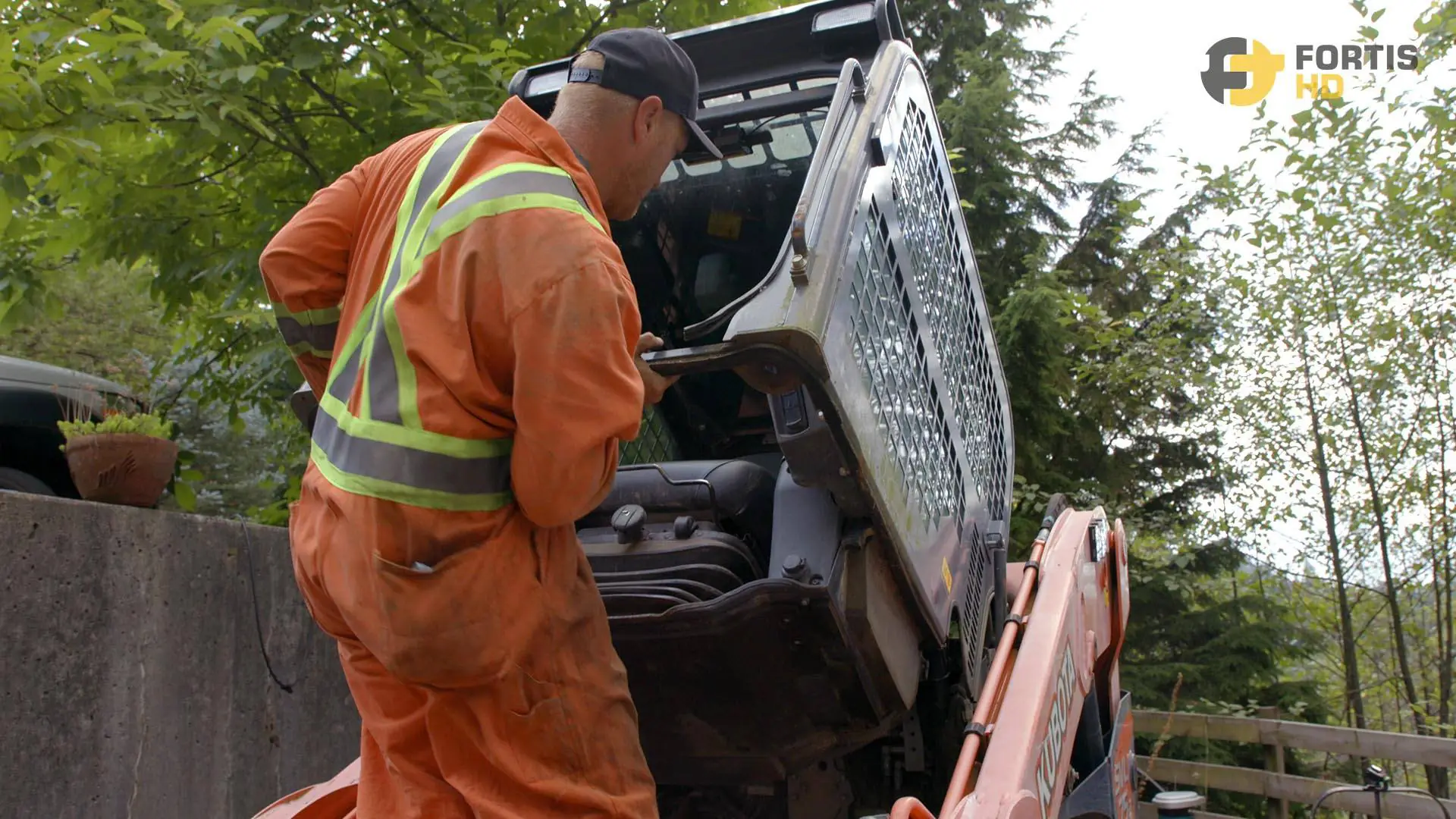
All daily routine check components are in the rear compartment. After opening the door, you’ll find the radiator. Tilt it out by removing three bolts to access the engine, transmission, oil and air filters. You can also flip up the cabin to fully access the hydraulic system and belly pan.
The SVL75-2 is a sturdy piece of equipment, primarily due to its undercarriage design.
The undercarriage is welded into the mainframe for extra strength and durability. The 11.7” of ground clearance lets you efficiently travel over obstacles, and the wide-open arrangement of the components allows for easy cleaning.
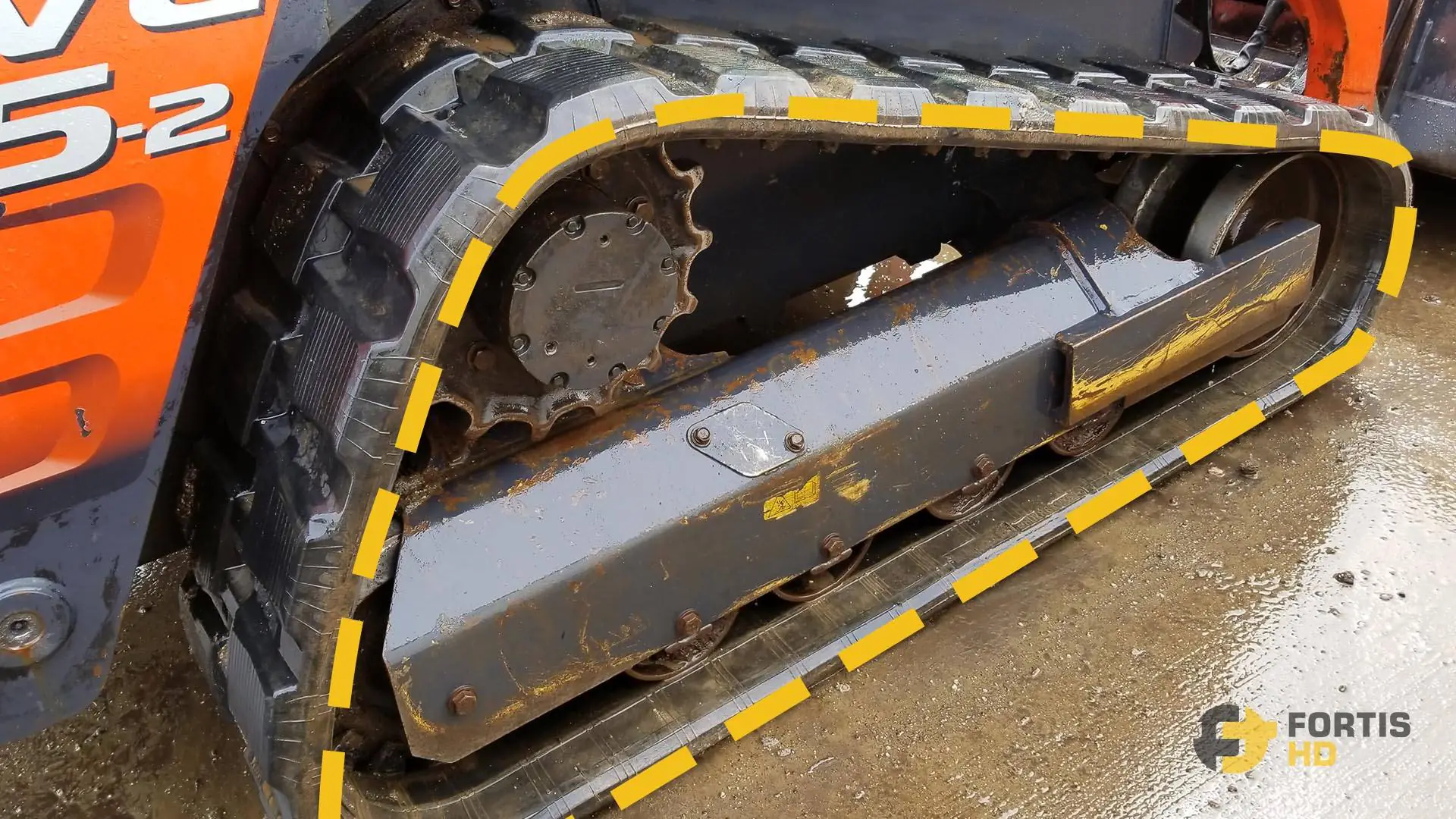
The double-flange front idler effectively supports the heaviest load and prevents detracking, while the single rear idler slides to provide flexibility to the track and reduce wear. Four triple-flange rollers further reduce the chances of derailment and widely spread the machine’s weight and load.
At Fortis HD, we have premium quality undercarriage parts designed for Kubota track loaders.
They are available at a fraction of the cost that you would expect to pay at a Kubota dealer and are built to deliver performance, reliability, and durability.
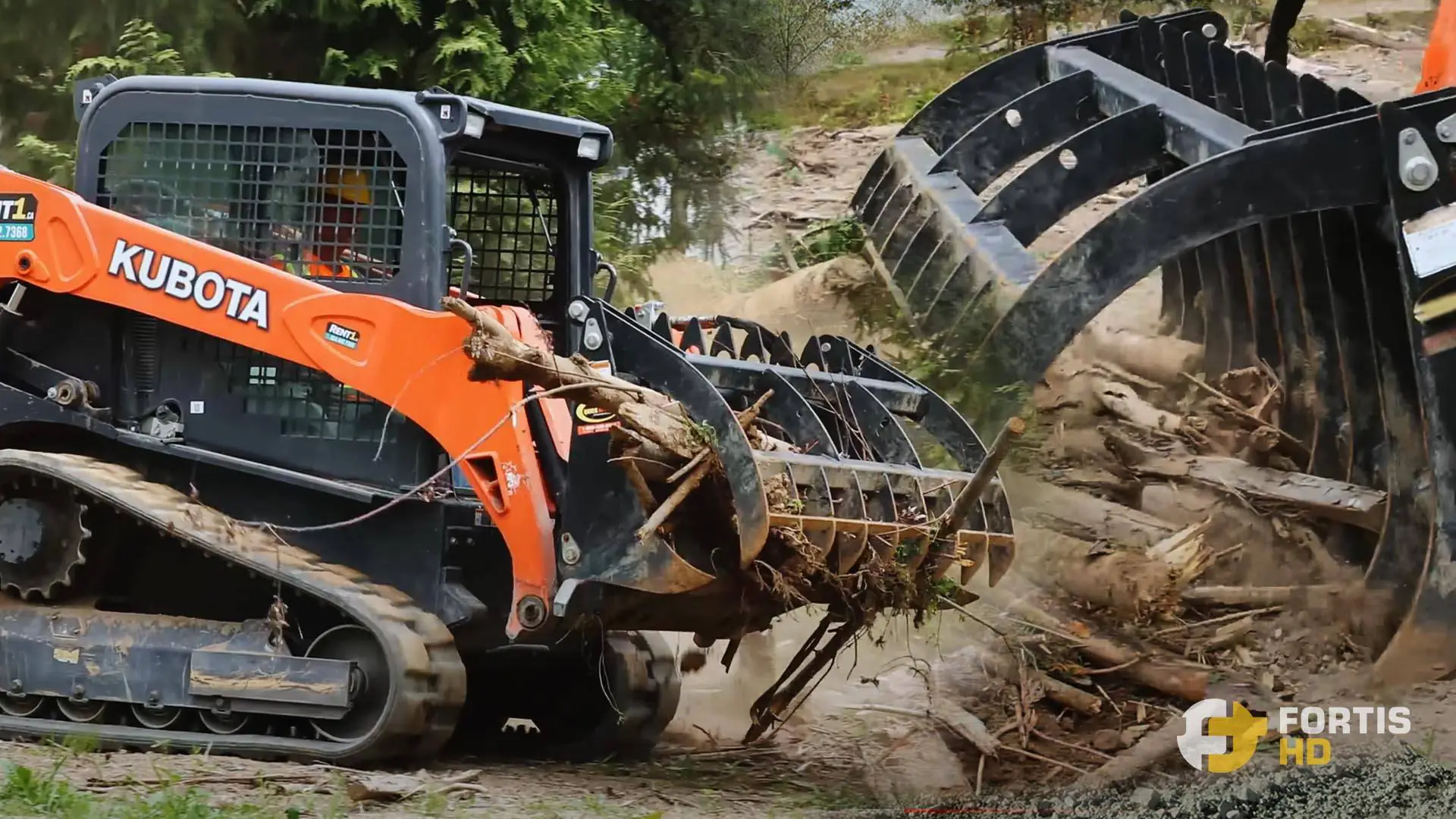
Several attachments are available to increase the versatility of the Kubota SVL75-2:
- Auger: For drilling holes in the ground.
- Grapple Bucket: To handle awkward materials such as logs, rocks, and scrap.
- Pallet Fork: To load, unload, and move palletized loads.
- Sweeper: To clean surfaces by sweeping debris, dirt, and other materials.
- Breaker: A hydraulic hammer for demolishing concrete structures or rocks.
- Brush Cutter: To cut through dense brush and undergrowth.
- Several size buckets.
- Cold Planer: To cut and mill concrete and asphalt.
- Broom: For lighter cleaning tasks, like removing dirt, leaves, and light debris.
- Dozer Blade: For pushing, grading, and leveling soil, sand, and other materials.
- 4-in-1 Bucket: A 4-in-1 bucket, grapple, bulldozer, and scraper blade.
- Tiller: It breaks up hard soil into loose dirt for planting.
- Tilt Attach: It allows attachments to tilt.
- Snow Blade: Pushes snow aside to clear roads, driveways, and parking lots.
- Snow Blower: Removes snow by blowing it to the side.
Some attachments require more horsepower than others, and the SVL75-2 can handle all of them thanks to its high-flow coupler manifold, which increases flow from the standard (17.4 GPM) to the high (29.3 GPM). Besides, the hydraulic quick attach lets you swap attachments in seconds without leaving your seat.
Room For Improvement
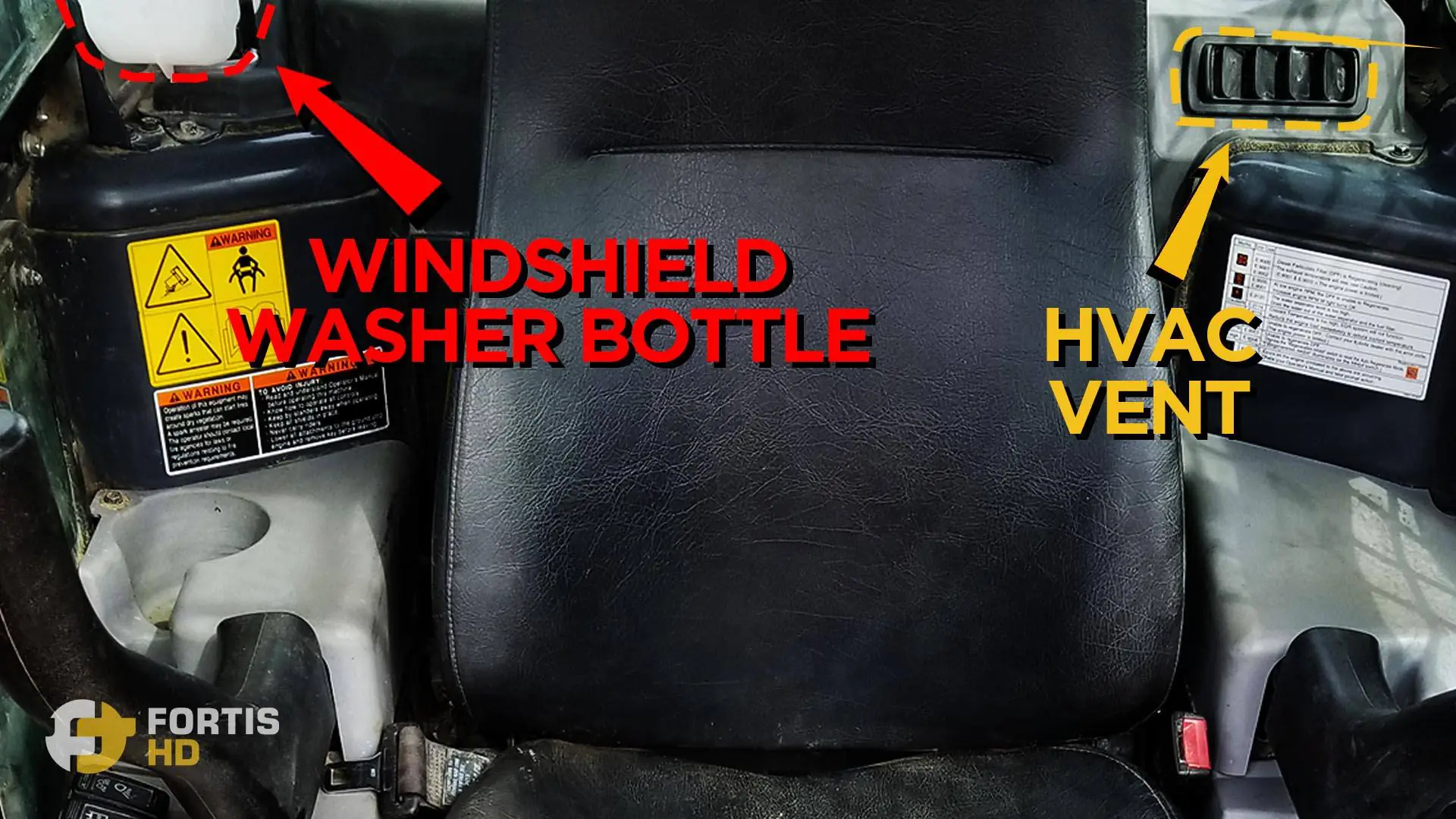
Ironically, although the SVL75-2’s cab is one of its better features, it also has some drawbacks.
First, the cabin is loud (83 dB) despite being pressurized, so we recommend hearing protection or noise-canceling headphones. If you work with the door open, you’ll notice an extra noise: the rattling sound of the door safety pins. Fortunately, you can tweak the safety pins to reduce the rattling.
The SVL75-2 cab has no backlit switches, and the radio, AC controls, and windshield washer bottle locations are awkward—yes, the washer bottle is inside the cab.
The radio is beside the left side of the seat backrest, and the AC controls are underneath the left armrest. Both are hard to reach.
The washer bottle will be over your right shoulder, and while it’s not a big deal if you fill the bottle all the way up, it’ll leak and spill all over the cup holder and your right shoulder. We recommend changing the washer bottle cap to a screwable one.
To wrap up the weird things in the cab, we must mention that the air conditioner vents are only on the left side—which most users don’t like. An SVL75-2 owner and member of the heavy equipment forum says, “the HVAC vents seem to heat and cool ok, but I do have a right hand that enjoys the heat just as much as my left hand does.”
The Kubota SVL75-2 comes with halogen lights instead of LEDs, the hydraulic coupler manifold—for high and standard hydraulic flow—is vulnerable to damage, and there’s no rear camera as standard.
Overall, the rear bay is accessible. However, it could be more efficient to change the location of the radiator to access all the components directly—some users don’t like needing a 3/4″ socket to pull out the three bolts holding it.
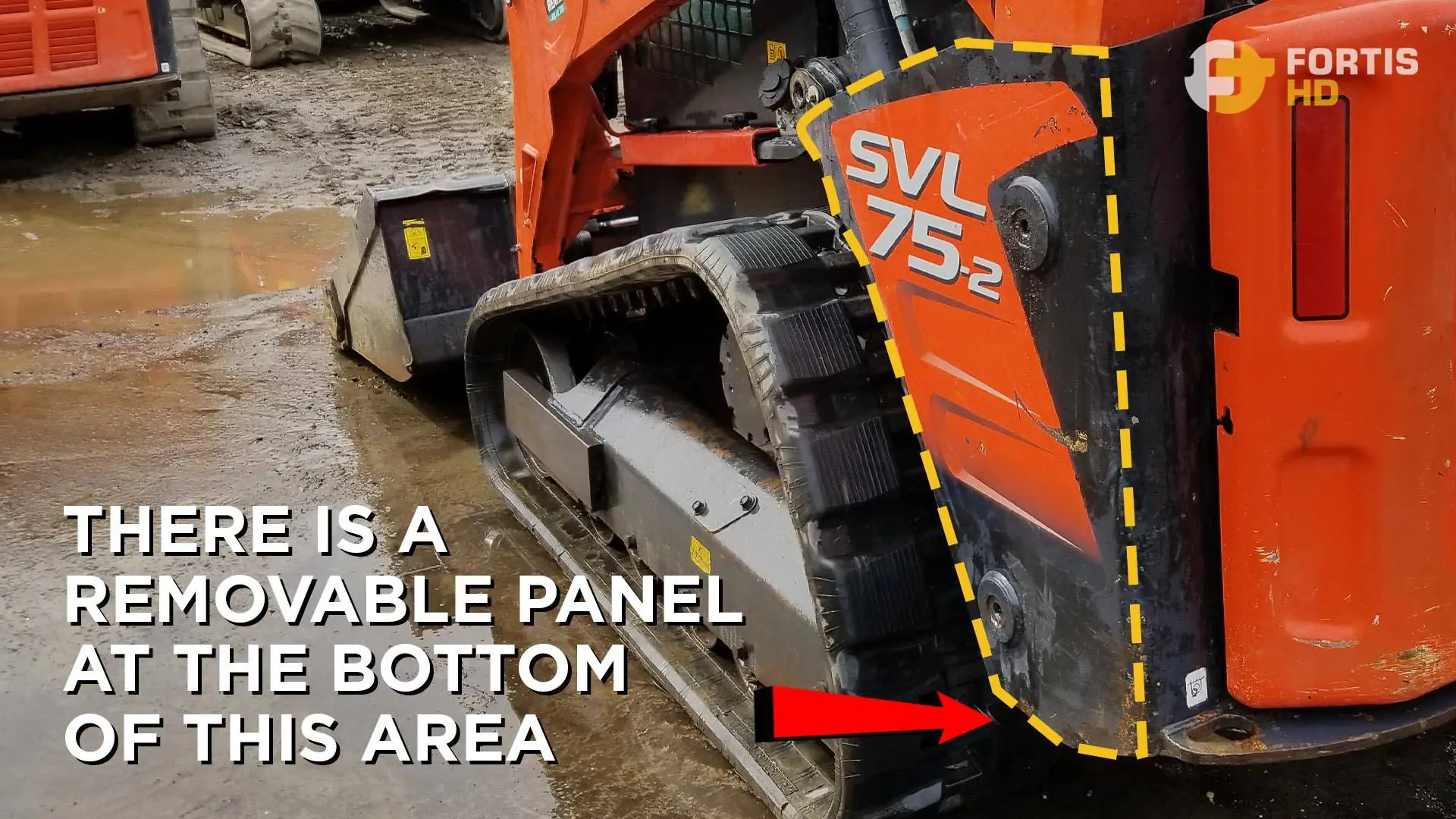
One last thing you should consider is the area behind the tracks covering the base of the arms. It’s a closed funnel and tends to trap dirt and debris, eventually damaging the arms’ mechanism or the hydraulic connections.
There’s a screwable panel at the bottom of that funnel-like area. We recommend leaving the panels out and cleaning the area regularly—in our opinion, not the best design from the engineers.
As we mentioned at the beginning of this section, the things we consider “bad” about the SVL75-2 won’t affect the overall good experience. It’s a reliable machine, and Kubota made it even better with an almost entirely revamped model: the SVL75-3.
The Kubota SVL75-3 Compact Track Loader
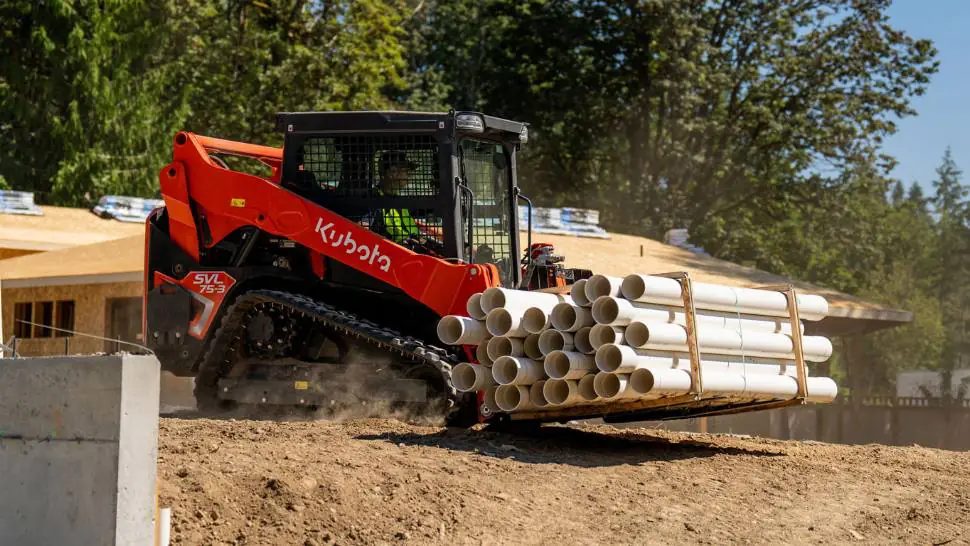
Photo source: www.kubota.com
Mike Scholten, marketing manager at Scholten’s Equipment—one of four major agriculture equipment dealers— says about the SVL75-3, “Kubota kept what people liked about the SVL75-2 and added things that needed to be added to make it even better.”
Let’s start with the cab. It’s a one-piece sealed unit that produces fewer vibrations and is much quieter (76 dB) even at full throttle. Also, the door safety pins produce less rattling noise.
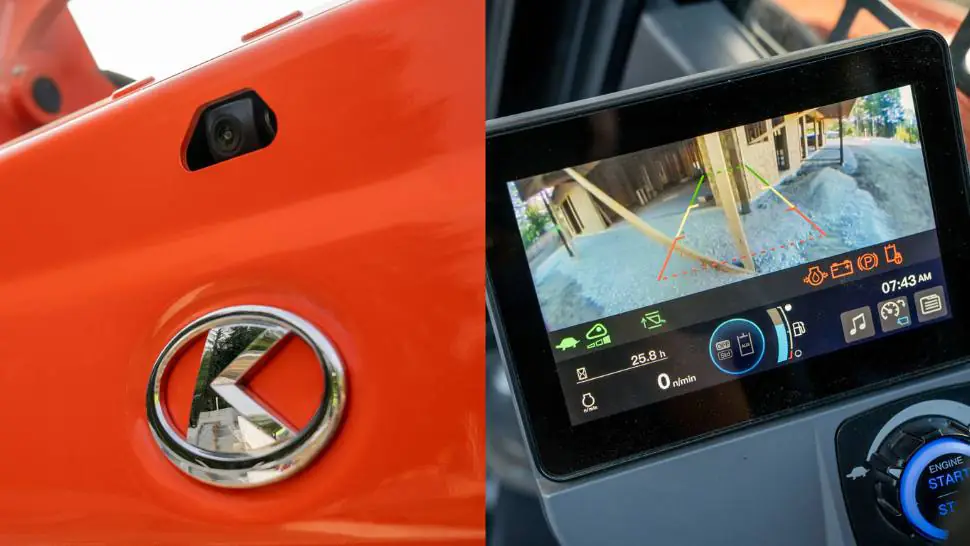
Photo source: www.kubota.com
Due to its engine, cooling pack, and torque tube rearrangement, the SVL75-3’s rear visibility is slightly narrower than the SVL75-2. Still, a standard backup camera with 176 degrees of visibility greatly compensates for that.
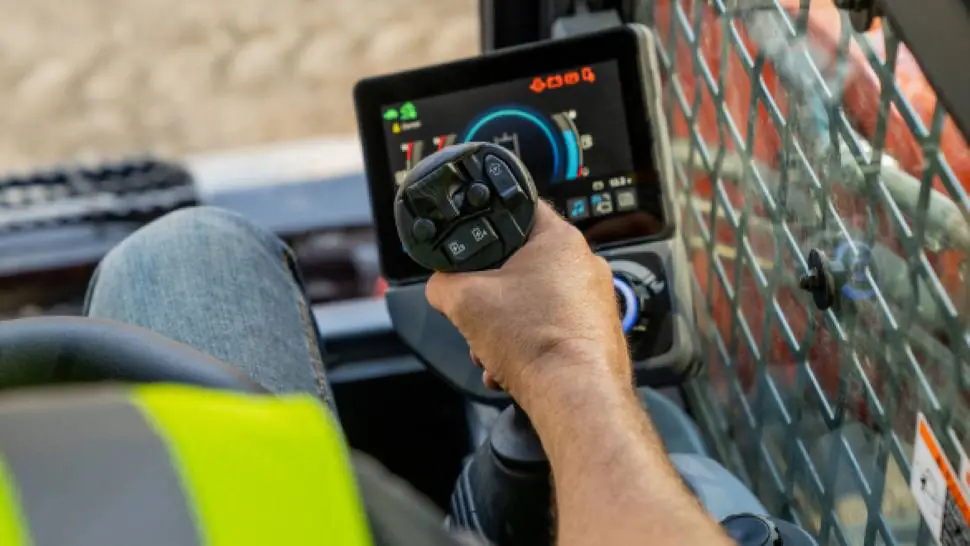
Photo source: www.kubota.com
The cab has backlit switches, the AC controls are more accessible, and the HVAC vents are on both sides of the cab. It has a 7” LCD touch screen that can—among other things—control the radio, start the machine, read a bunch of indicators and alerts—with info explaining if you’re doing something wrong—and access the rear view camera. Plus, the washer bottle is no longer in the cab!
Another cool feature of the cab is that it’s pressure-positive. When the HVAC runs, dust, grass, and debris won’t get inside the cab from gaps around the controls or the panels.
On the outside, the Kubota SVL75-3 has noticeable changes as well. The lights are now LEDs. The front lights are longer, wrapping the corners of the cab, and they include a timer to keep them on after you turn the machine off—a handy feature if you need to leave the cabin while working in the dark.
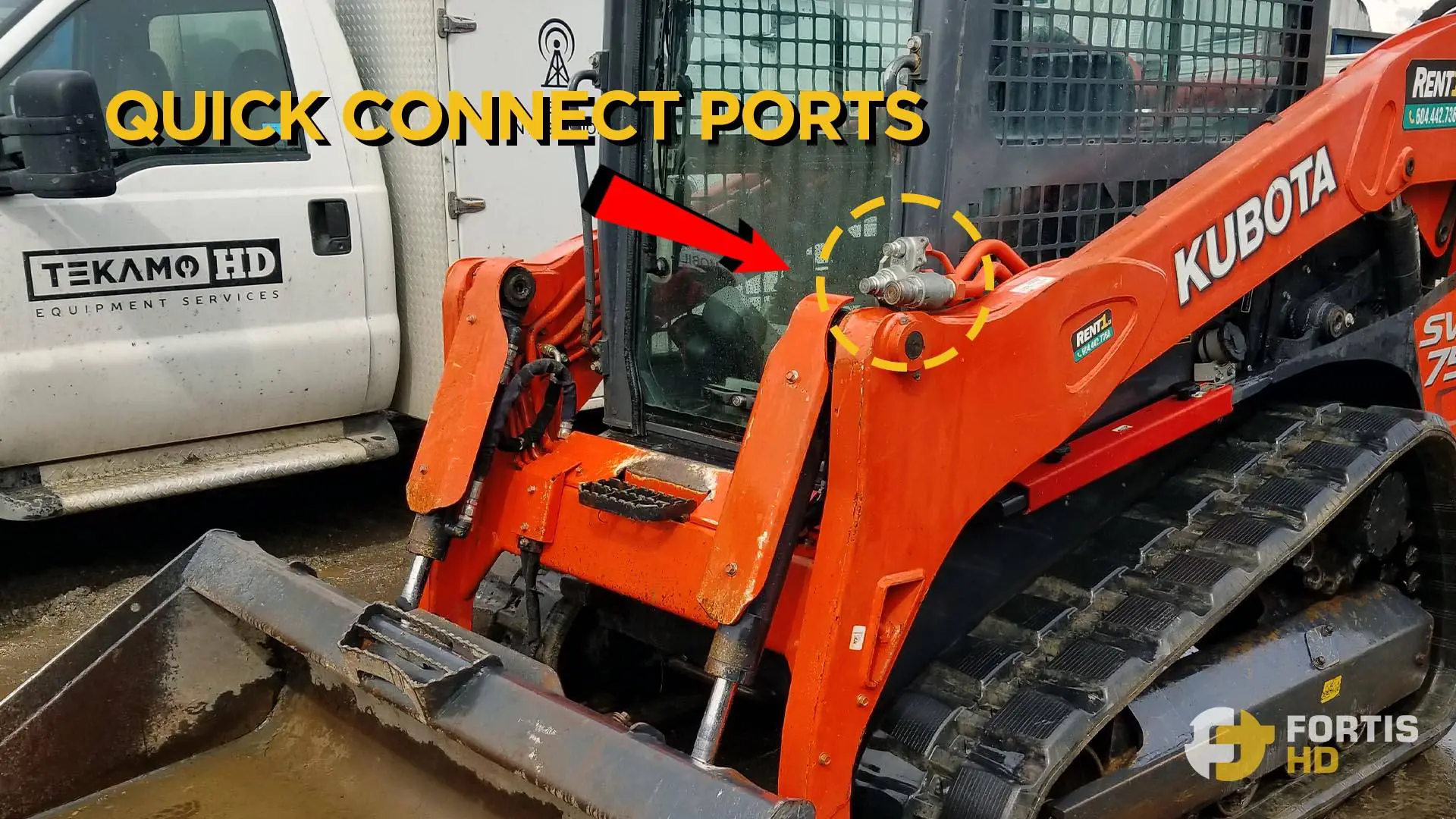
The hydraulic coupler manifold has a guard around it (it would have been nice to have a steel plate protecting the hydraulic quick attach as well). You can now add counterweights to increase the lift capacity, and, like the SVL97-2, it comes with a pre-cleaner to keep dust and dirt away from the engine, reducing maintenance costs.

In our eyes, three of the best improvements of the SVL75-3 are:
- The fuel tank is no longer in the belly but in the back door, making filling and repairs much easier.
- The radiator and oil cooler are on top of the engine, improving inspection, service, and maintenance tasks.
- A reversing fan–optional–to clean out the radiator and remove all that’s clogging up your system. Suitable for working in forestry or excessively dirty applications.
SVL75-2 and SVL75-3 Specs Comparison
Instead of overwhelming you with a lot of data, we’ll compare the most significant dimensions and features and share links so you can check the complete information.
Mechanical and Hydraulic Specifications
Compared with the Kubota SVL75-2, the SVL75-3 has increased its ROC (rated operating capacity at 35% tipping), low and high speed, hydraulic flow, and net engine output in the following percentages:
- Net engine output → 6%
- ROC (rated operating capacity at 35% tipping) → 8%
- Low and high speed → 20%
- Hydraulic flow → 10%
| Model | SVL75-2 | SVL75-3 | ||
|---|---|---|---|---|
| Engine | Model | V3307-CR-TE4 | V3307-TE5A | |
| Gross output - HP (kW)/rpm | 74.3 (55.4)/2,400 | 74.3 (55.4) / 2,400 | ||
| Net output - HP (kW)/rpm | 68.8 (51.3)/2,400 | 73.2 (54.6) / 2,400 | ||
| Loader Performance | ROC (-35% tipping load) - lbs (kg) | 2,300 (1,043) | 2,490 (1,129) | |
| Tipping load - lbs (kg) | 6,570 (2,980) | 7,112 (3,226) | ||
| Breakout force | Bucket - lbf (kg) | 6,204 (2,814) | 6,191 (2,808) | Lift arm - lbf (kg) | 4,766 (2,162) | 4,723 (2,142) |
| Lift arm path | Vertical | |||
| Undercarriage | Track width | Standard in (mm) | 12.6 (320) | 12.6 (320) |
| Wide in (mm) | 15.8 (400) | 15 (380) | ||
| Track rollers (per side) | 4 | |||
| Travel speed | Low - mph (km/h) | 4.7 (7.5) | 5.6 (9.0) | High - mph (km/h) | 7.1 (11.5) | 8.6 (13.7) |
| Min. ground clearance - in (mm) | 11.7 (296) | |||
| Hydraulic System | Aux. hydraulic flow | Std. - gpm ( l/min) | 17.4 (66.0) | 19.2 (72.7) |
| High - gpm ( l/min) | 29.3 (110.9) | 29.8 (112.8) | ||
| Aux. hydraulic pressure | psi (kgf/cm2) | 3,185 (224.0) | ||
| Operating weight (Includes operator weight 165 lbs.) - lbs (kg) |
9,039 (4,100) / 9,204 (4,175) |
9,190 (4,169) / 9,355 (4,243) |
||
Dimensions
Two noticeable differences of the SVL75-3 over its previous version are the greater hinge pin height—which, along with its vertical lift path, makes dumping into a tri-axle dump truck easier—and the smaller turning radius to maneuver more efficiently in tight areas.
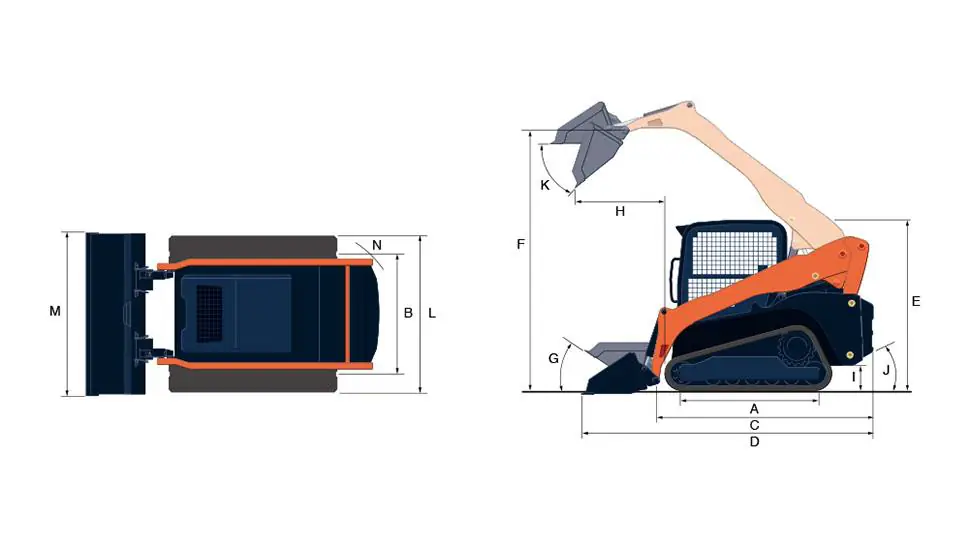
Photo source: www.kubota.com
| Model in (mm) | SVL75-2 | SVL75-3 | |
|---|---|---|---|
| A | Length of track on ground | 56.5 (1,436) | 56.5 (1,436) |
| B | Track gauge | 53.3 (1,355) | 53.3 (1,355) |
| C | Length w/o bucket | 109 (2,768) | 112 (2,844) |
| D | Length w/bucket on ground | 140.8 (3,576) | 142.1 (3,609) |
| E | Height to top of cab | 82 (2,083) | 81.8 (2,078) |
| F | Bucket hinge pin height at max. lift | 119.1 (3,025) | 122.7 (3,117) |
| G | Rollback angle at carry position (degree) | 27 | 27 |
| H | Reach at max. lift and dump | 41.7 (1,060) | 39.6 (1,007) |
| I | Ground clearance | 11.7 (296) | 11.7 (296) |
| J | Departure angle (degree) | 31.5 | 31.1 |
| K | Max. dump angle (degree) | 40 | 38.5 |
| L | Vehicle width, Standard track / Wide track | 65.9 (1,675) / 68.3 (1,735) | 65.9 (1,675) / 69.1 (1,755) |
| M | Width with bucket | 68 (1,727) | 68 (1,727) |
| N | Turning radius from center-machine rear | 107.1 (2,720) | 57.8 (1,468) |
Functions and Features
Let’s see what’s common in both SVL75 compact track loader versions and how engineers improved an already great machine.
The SVL75-2 & -3 share at least three technological systems:
- The common rail.
- The automatic regeneration.
- The electronic travel torque management.
The common rail system is a modern technology that controls the fuel injection timing and quantity to enhance combustion efficiency, resulting in more power and torque from the engine.
Kubota’s regeneration system automatically heats up the exhaust to clean out the soot buildup in the DPF.
The electronic travel torque management system monitors the machine’s load and optimizes the hydraulic pump output according to how hard you push it.
The system dynamically adjusts the torque to prevent engine overload for more efficient use of power and lower fuel consumption. Operators can focus more on the task than managing the machine’s power distribution, thus increasing productivity.
For the SVL75-3, engineers added the following functions:
- Advanced multifunction valve (AMV).
- Auto-shift and track response function.
- Controls sensitivity settings.
The AMV improves the machine’s performance and productivity by allowing operators to run the loader arm and the attachment at the same time without stalling.
Both the auto-shift and the track response functions modify the travel speed.
The auto-shift or auto-downshift, as it’s also known, automatically downshifts for maximum torque and traction when turning and shifts back to high speed when traveling straight for maximum productivity.
On the other hand, the track response function lets operators manually change their travel response sensitivity. There are three options available: mild, normal, and quick. Want to get things done quickly? Use the quick response. Need to go carefully in a tight space? Go with the mild option.
CTLs Comparable to the Kubota SVL75-2
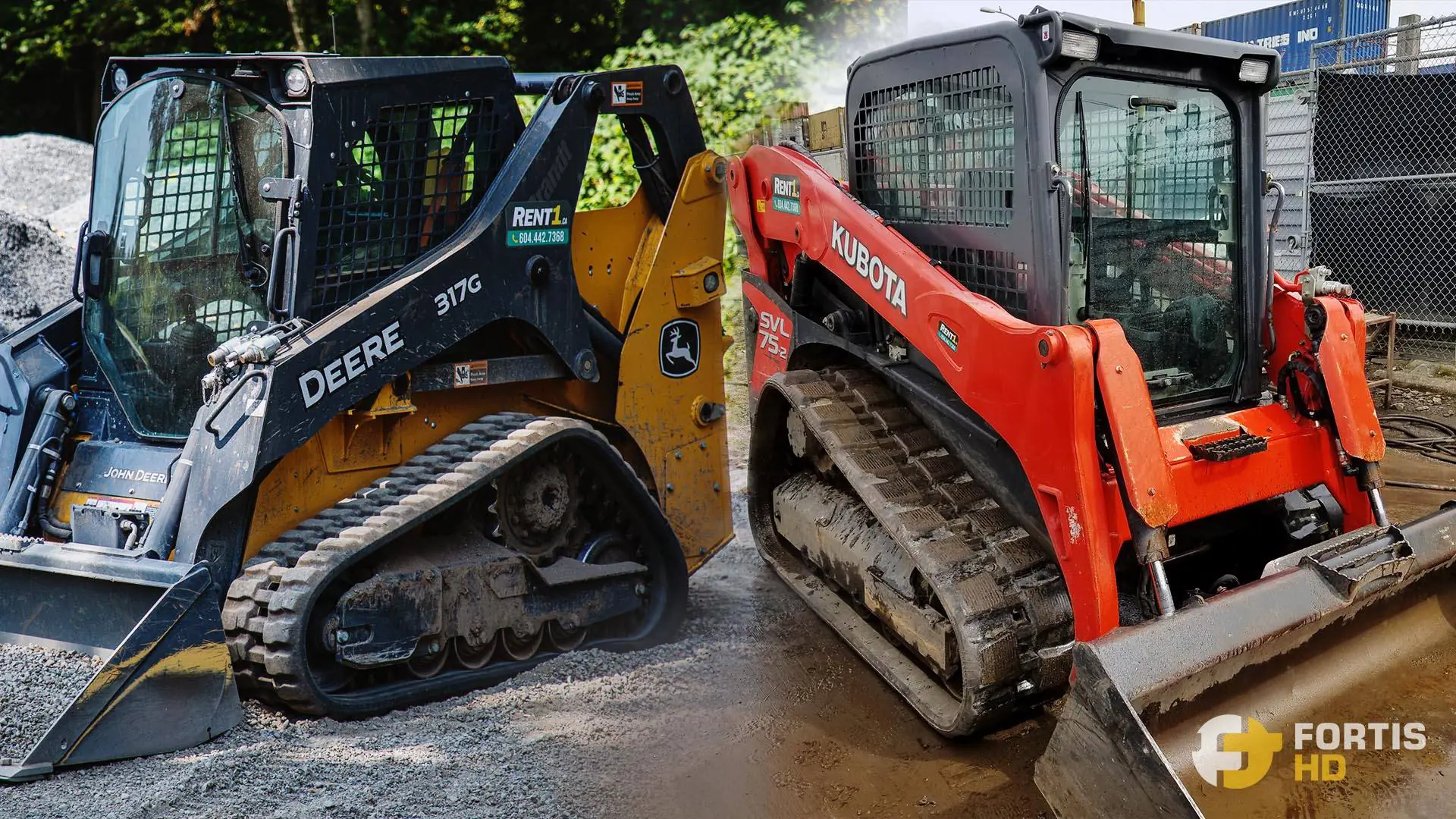
Some models competing with the Kubota SVL75-2 are the Cat 259D, John Deere 317G, and the Bobcat T320.
We could write an entire article discussing the differences between each model. The main features differentiating the Kubota SVL75-2 from similar equipment are:
- The roll-up door and wide entrance.
- The spacious cab has a lot of visibility. However, there’s no rear camera as standard.
- No switches or bottoms are at the front of the cabin, contributing to the visibility.
- The SVL75-2 is one of the most simple pieces of equipment, technologically speaking.
- The controls are hydraulic over hydraulic instead of electronic. It improves responsiveness, especially when doing fast motions, like shaking dirt out of a bucket.
- The components in the rear bay are not as accessible as in other models due to the radiator being in front of them.
- The undercarriage is welded to the mainframe with a single flange rear idle. It’s more open than others, making cleaning better.
- Higher ground clearance.
Technically, the machines have slight differences regarding hydraulic pressure, tipping load, breakout force, and speed. For detailed information, check the following comparative table.
Testimonials and Case Studies
From all the testimonials available about the SVL75-2 compact track loader, we chose two–that also serve as case studies–because of one key aspect: both guys have tried several of the most popular CTL brands before choosing Kubota as part of their fleets.
Cole Morse owns M&M EarthWurx LLC, a side excavation business. He has thousands of hours on Cat, Takeuchi, JD, and Bobcat skid steers. After spending 500 hours operating the SVL75-2, he gave an unbiased review and said, “I like the machine, and if you can work on stuff yourself and are mechanically inclined, you’ll like it even more.”
Lonnie Fuller, the owner of Circle Services Construction, a dirt-related construction company in Tulsa, Oklahoma, has a long-standing history with Kubota. A couple of years ago, he needed to replace all the equipment in his fleet.
What’s interesting about this case study is that his crew tested four of the most popular brands, and Lonnie asked them to vote and rank their favorite brand based on the machine’s abilities. To Lonnie’s surprise, all 12 guys put Kubota as their first choice.
Conclusion
The Kubota SVL75-2 is a sturdy and reliable compact track loader with simple yet effective hydraulic over hydraulic controls and a comfortable cab to keep you working for hours.
As with every machine, it has minor flaws, but its continued popularity among the top brands for several years proves its overall quality.
With the SVL75-3 version, Kubota fixed what most users complained about and found ways to keep improving its popular compact track loader.
If you want more power, check our post about the SVL75-2’s big brother: the Kubota SVL97-2.
Not a fan of Kubota? Then, learn what makes the Cat 259D3 a direct competitor to the SVL75-2.
With over 20 years of experience, Fortis HD is an OEM certified provider. Our Kubota SVL 75-2 tracks are designed as OEM replacements for most machines, ensuring a perfect fit and superior performance.

